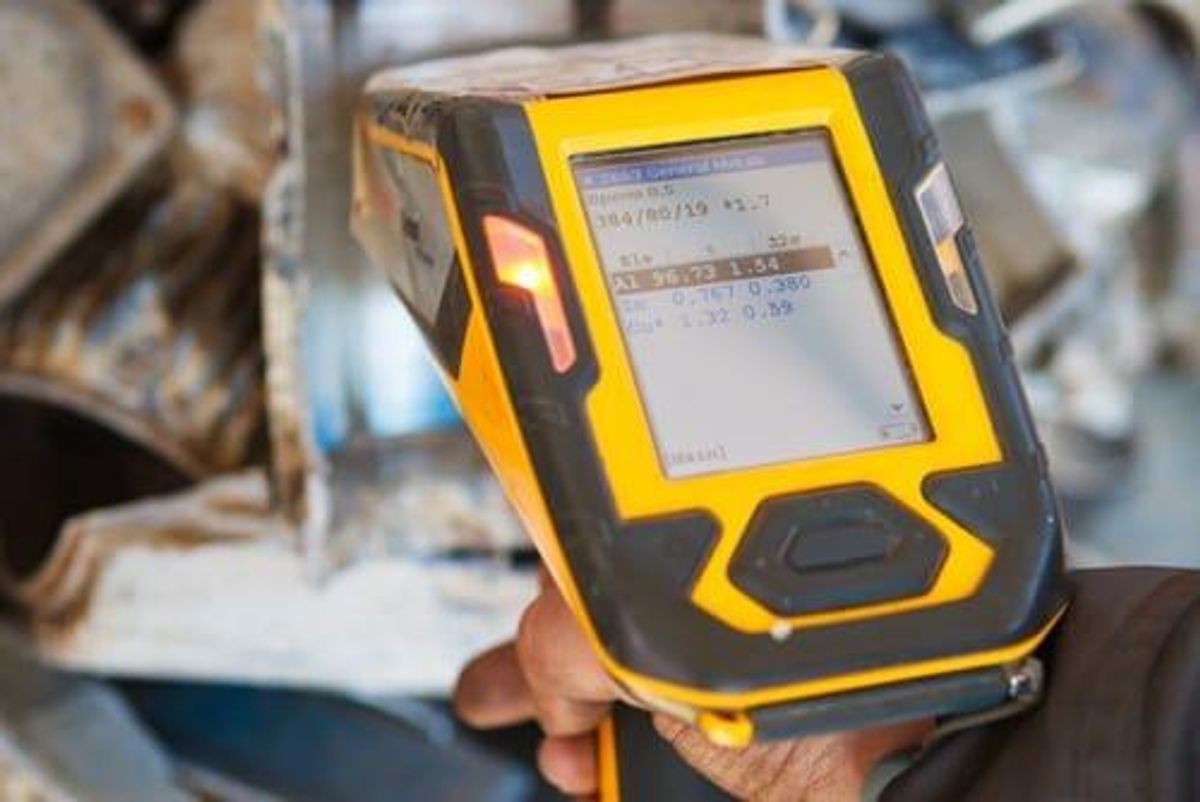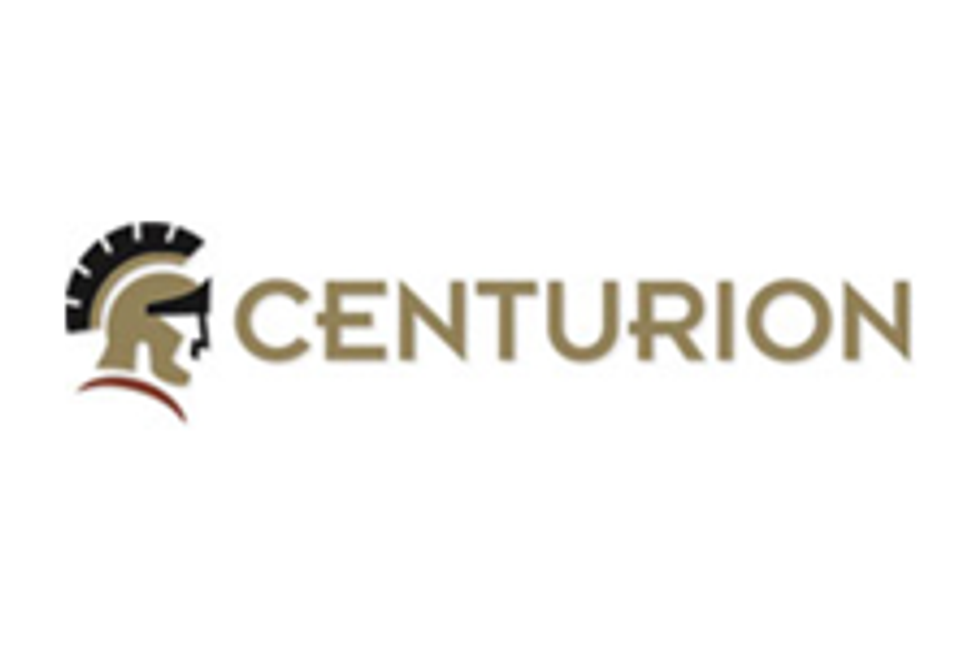XRF Analyzers: Cost-cutting Precious Metals Exploration Technology

Handheld XRF devices are an essential tool with a significant return on investment. Companies with the right tools in the right jurisdictions are on track for quicker discoveries and more.
XRF analyzers are proving a valuable tool for resource exploration companies.
In challenging, fast-changing markets, exploration companies are looking for ways to cut costs and make quick decisions. Recent developments in portable x-ray fluorescence (XRF) technology (including sensitivity, analysis speed and increased instrument durability) have revolutionized the way exploration companies conduct their field programs.
Saving time on locating and refining exploration targets as well as saving money on the costs of analytics can ultimately lead to quicker discoveries.
XRF technology has applications across the mining cycle
Over the past decade, handheld XRF analyzers, commonly referred to as XRF guns by geologists in the field, have dramatically improved the way resource companies evaluate, explore and extract value from mineral projects. They have been especially effective for use in geochemistry analysis during exploration and for grade control during mining operations, and have become a must-have tool for exploration projects.
First used in the alloy and scrap metal testing industry and then in environmental site monitoring, XRF technology is based on a type of metals-related analysis known as spectrometry. Portable XRF guns can determine the chemical signatures of a sample’s elemental composition by measuring the secondary x-ray emissions the sample gives off when exposed to x-ray fluorescence.
While the XRF gun doesn’t directly identify gold deposits, it can detect the geochemical pathfinder elements that are commonly associated with gold, the most common one being arsenic, but also silver, copper, cobalt and selenium to name a few — and it does all this in a matter of seconds.
“A pathfinder or indicator element is one that is intimately related to the style of gold deposit that a company may be looking for,” Aaron Baensch, Principal Geologist at Olympus Scientific-International Mining Group told AZO Mining. “Another positive of these geochemical signatures is that they are quite often present at a scale much larger than that of the gold deposit itself, so they can make the footprint of the target much, much bigger and, hence, easier to explore for.”
The ability to quickly acquire real-time data that is also linked to a GPS location has had a significant impact on the ability of resource exploration companies to obtain lab quality data on site for more efficient and effective field campaigns. This data is key to accurately mapping an area for anomalous concentrations of key pathfinder elements — the more precise your geochem map the less drill holes you’ll need to hit pay dirt.”
Mineral exploration often involves geochemical sampling across a wide area with samples sent to a laboratory for assaying. “These logistics combined with long lab turnaround times, time-consuming sample preparation, and complex analytical techniques meant that geologists could be waiting many weeks or months to get information back from the field,” said Baensch. “The use of portable XRF has vastly improved this feedback loop by providing real-time sample information in the field, which can then be used to drive and refine exploration programs on the hop. This is particularly useful for pre-screening and prioritizing samples, expediting significant samples to the lab, and reducing the amount of barren or waste-rock analysis.”
XRF guns have proven their value during exploration drilling as well — giving geologists a good idea of a drill hole’s potential in a matter of minutes compared to waiting weeks for assay results to come back from the lab. Once mining operations are underway, XRF analyzers can help mine managers narrow the gap between planned production and realized output by delineating grade boundaries directly in the field, preventing ore from ending up as waste and increasing overall mine profitability.
In many ways, this technology has allowed exploration companies to save time and money in a variety of applications and across the mining cycle. But where it’s really made a huge impact in the mining industry is at the early stages of exploration, helping companies to quickly identify prospects and move exploration forward rapidly and at low cost — two critical benefits for junior mining companies.
XRF analyzers cutting costs and fast-tracking discovery
Even from day one, before a resource company makes a purchase decision on a prospective property, XRF technology allows geologists to get on the spot analysis to understand its potential for economically viable minerals instead of waiting weeks for lab results.
The use of handheld XRF analyzers during geochemical testing and mapping has significantly reduced the time it takes to understand the mineralization of a given area and confirm the existence of an ore deposit.
“As VP of Exploration, my job is to find and identify projects that have the potential to host economic mineral deposits ” said Dale Brittliffe, P.Geo., VP of exploration for Silver Viper Minerals (TSXV:VIPR). “The XRF gun is a one of the best tools in the field for cutting costs and saving time in that it can provide near-instant analytical feedback to support geological interpretations and decisions made by the geologist while still in the field.”
One of the first steps to evaluating a potential property for acquisition is getting boots on the ground for a site visit to further investigate the property’s potential to host an economic deposit and identify any red flags. Of course, experience and knowledge of geological models goes a long way, but advanced technology like the handheld XRF analyzer can play a huge role in helping a company to evaluate a potential asset with confidence and speed.
“On any exploration property we try to digest all of the available geological information to predict the type of mineralized system likely to be present. Using an exploration model in this way we can start to look for certain specific evidence, the presence, or lack of, certain pathfinder elements and trace geochemistry features are very useful tools in early stages,” added Brittliffe.
In his role as VP of Exploration for Silver Viper Minerals, Brittliffe was instrumental in the recent decision to acquire the La Virginia gold-silver property, located in Mexico’s prolific Sierra Madre Occidental region of eastern Sonora State, from Pan American Silver.
The ability to obtain results in the field within minutes instead of weeks allows geologists to make critical time saving decisions, including where to sample further and where to target the drills. The reduction in lab assay costs alone can be exponential.
For exploration projects in remote locations, sending drill core to a lab can be expensive and time consuming. The ability to analyze the core prior to shipping it to the lab allows geologists to weed out the barren from the mineralized core. Once lab assays are complete and shown to correlate with the XRF results, the gun can then be used to determine the geochemistry of drill cuttings on site within minutes creating a geochemical profile that geologists can then use to ensure right away that the drill rig is targeting the mineralized zone.
“The ability to quickly and accurately test large numbers of field samples daily can have a remarkable impact on fast-tracking projects through discovery and beyond,” said Brittliffe. “from vectoring into a mineralized system using pathfinder elements to zeroing in on a mineralized structure within a broad zone of anomalism, the near instant feedback from one of these units is highly powerful for the crew in the field.”
How much money can a junior save with a handheld XRF analyzer? Baensch says “it’s not uncommon” for a company to save millions of dollars on a single campaign after investing less than $100,000 in two XRF guns. “We have had clients that are drilling up to 40,000 meters of RC drilling in a year and analyzing all of it in the field with two portable XRF analyzers. From this, they may only choose to send say 10,000 meters to the lab.”
XRF technology has advanced at a sharp rate since its birth in the alloy and scrap metal testing industry two decades ago. And today’s technology is expected to undergo further advancement as manufacturers of the handheld devices work to improve their products in order to differentiate themselves in what’s becoming a competitive global market.
The takeaway
Robust markets for precious metals are expected to further drive gold and silver exploration, with Mexico still the undeniable favorite destination for gold juniors and majors alike. With the coming advancements in XRF analyzers, companies with the right tools in the right jurisdictions are on track for quicker discoveries, more effective drill programs and higher production rates.
This article was originally published by the Investing News Network in May 2018.
This INNspired article is sponsored by Silver Viper Minerals (TSXV:VIPR). This article was written according to INN editorial standards to educate investors.




